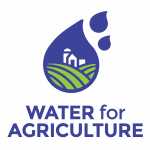
The Water for Agriculture project brings together social and biophysical researchers and practitioners to work with communities in Nebraska, Pennsylvania, and Arizona to address the water and agriculture issues that matter most to them through effective stakeholder engagement.
The project is currently developing five study locations in three states. In each site, we seek to build local capacity, provide technical and coordination assistance and resources, and provide the biophysical information data necessary to meet study site priorities and develop their own strategies to address their long-term agriculture and water-related needs. For more information on each state and site see Project Sites.
What Are Our Goals?
- To work in cooperation with, and in service to five communities in Pennsylvania, Nebraska, and Arizona
- To provide these communities with the information, technical and coordination resources they need to address the water and agricultural issues that matter most to them
- To assess whether and how a community-led engagement approach can help these communities address their critical water and agriculture issues
- To develop and assess an evidence-based approach to stakeholder engagement
- To disseminate research findings and information through webinars, papers, presentations, and workshops
What Is Our Purpose?
To better understand the processes by which a broad range of stakeholders can come together to improve how water and agricultural issues are addressed in differing agricultural contexts.
Our purpose is to transform the way scientists, the Cooperative Extension System, technical services providers, agency officials, engagement practitioners, and communities can collaboratively approach critical water and agricultural issues. The project will develop, implement and evaluate an engagement process that works across variable hydrological and agricultural contexts in three states – Arizona, Nebraska, and Pennsylvania. While each state represents differing biophysical and social contexts, they all share long-standing and emerging water concerns related to agriculture.
Also, see Project Summary for a one-page overview of the project.
